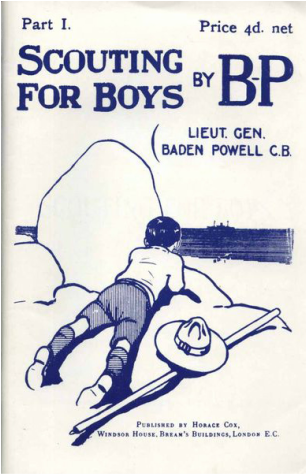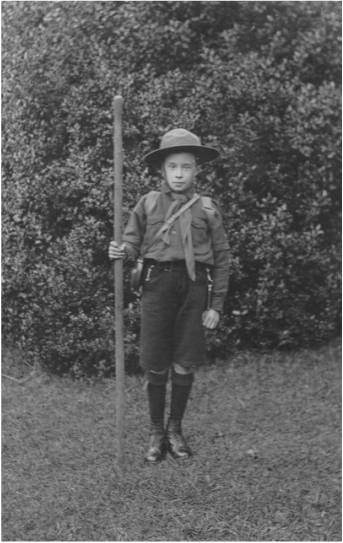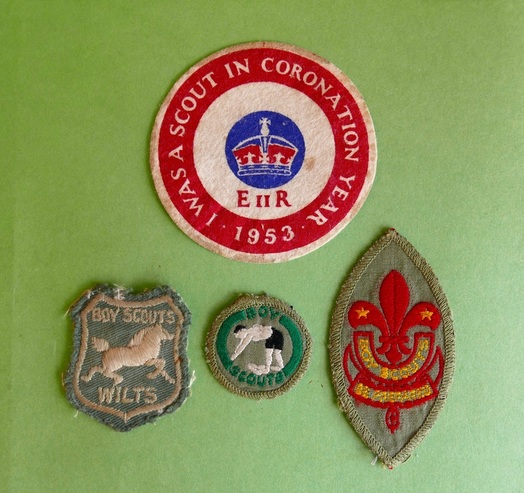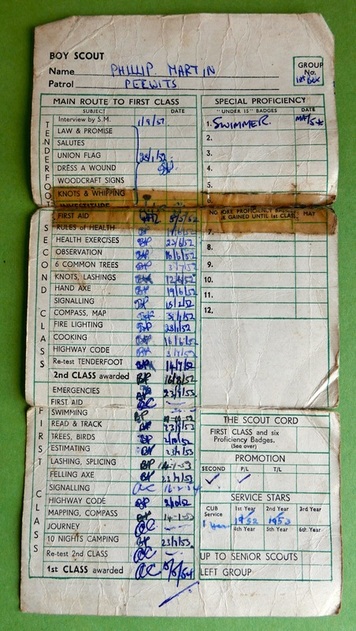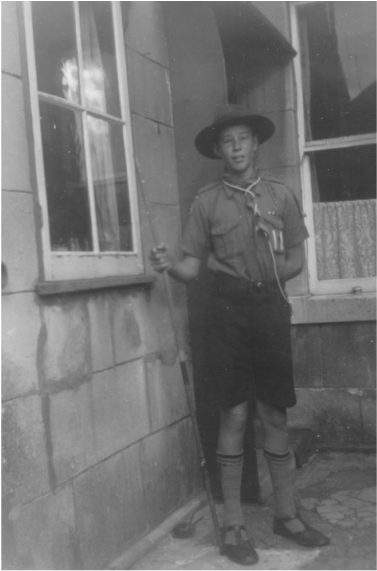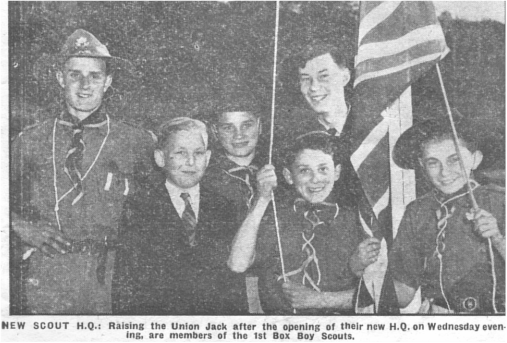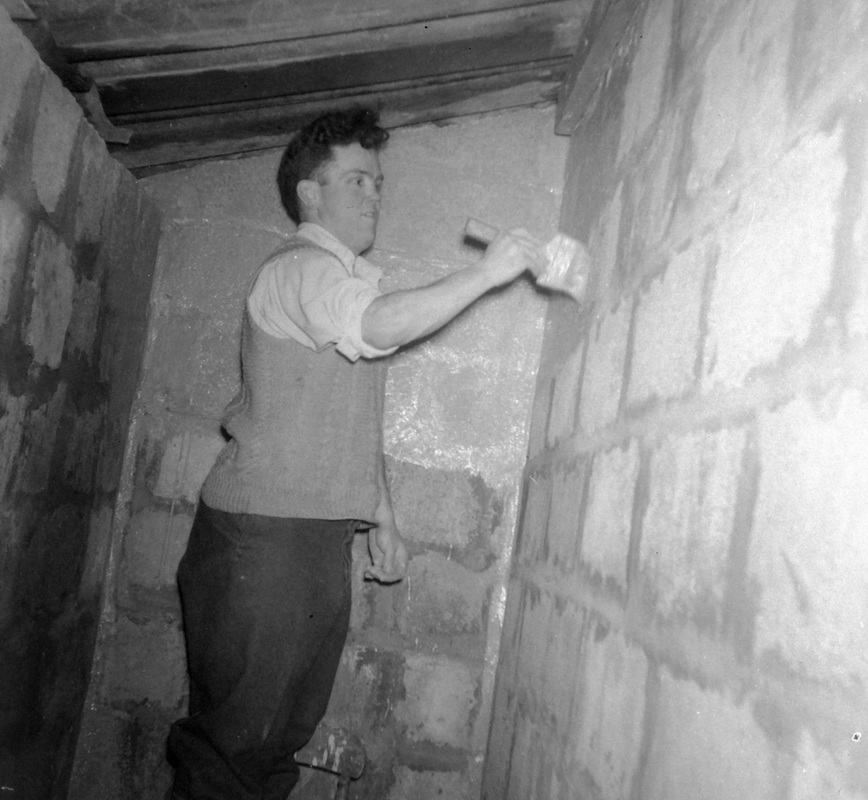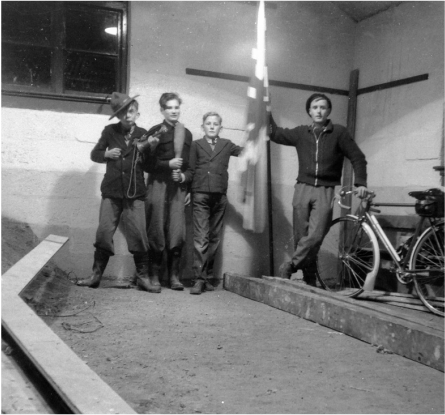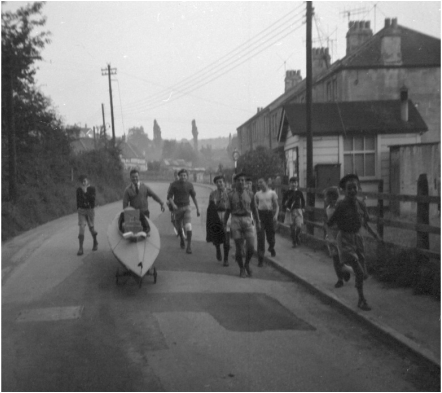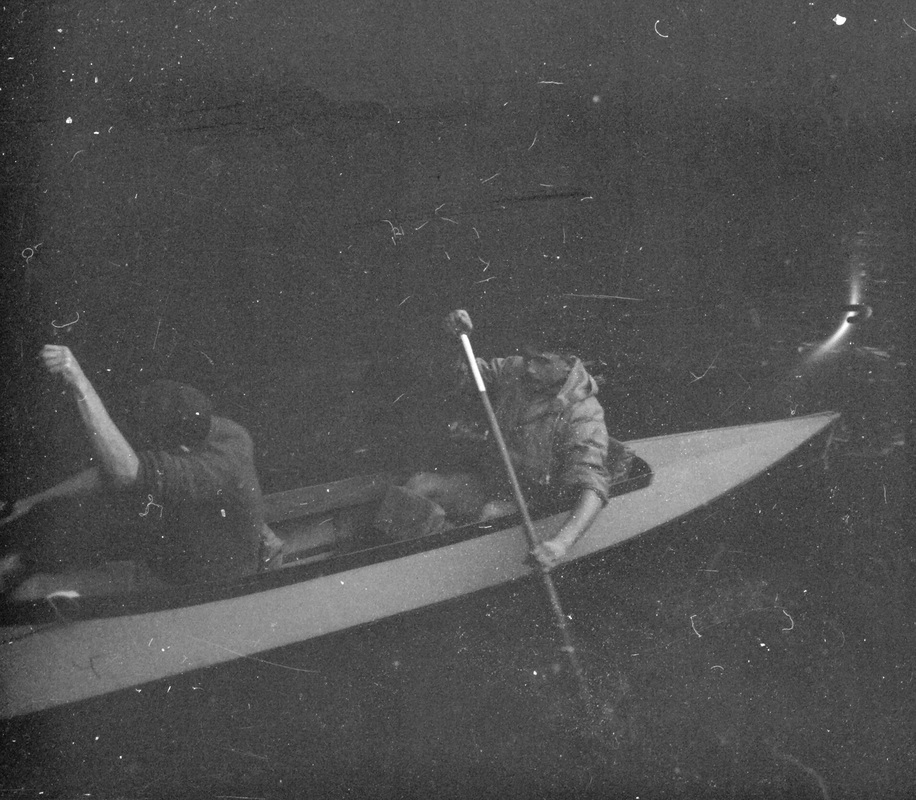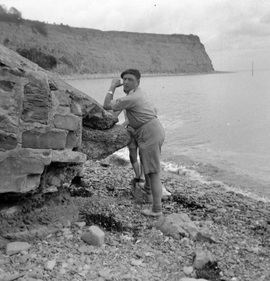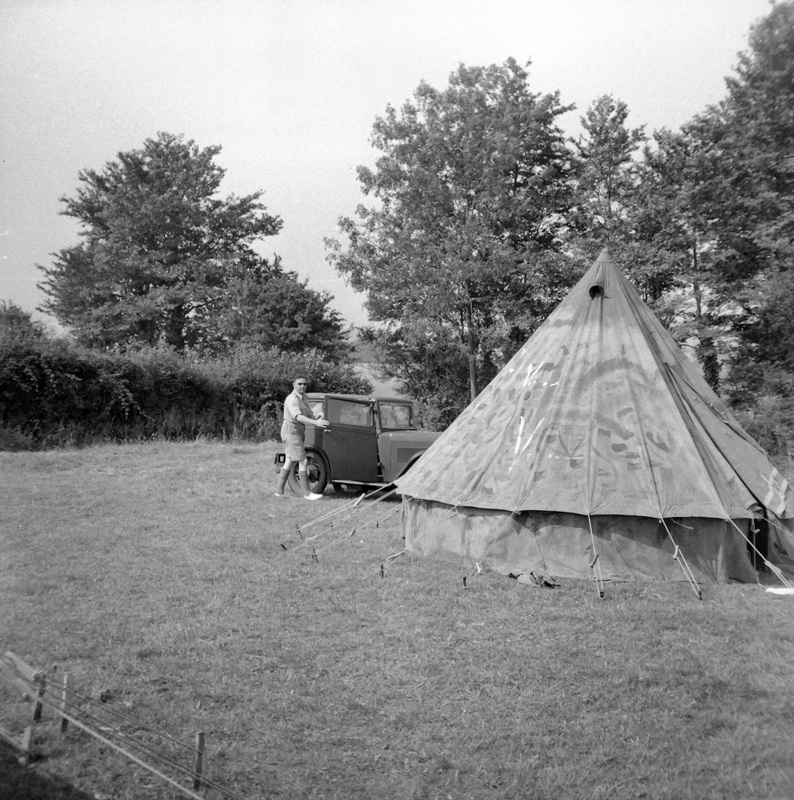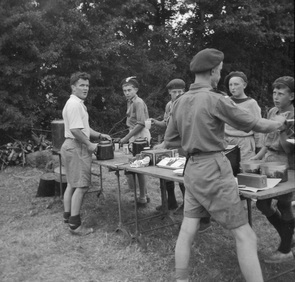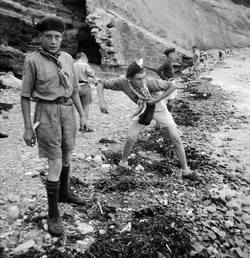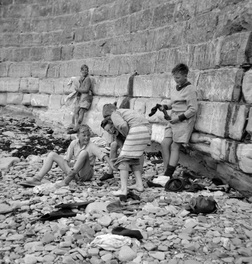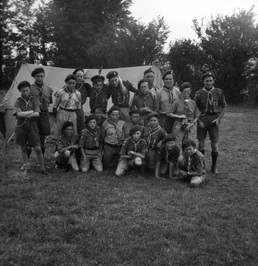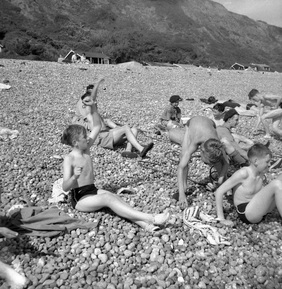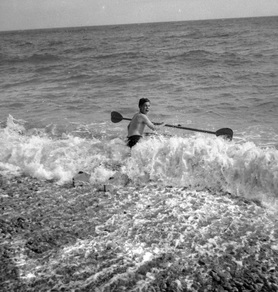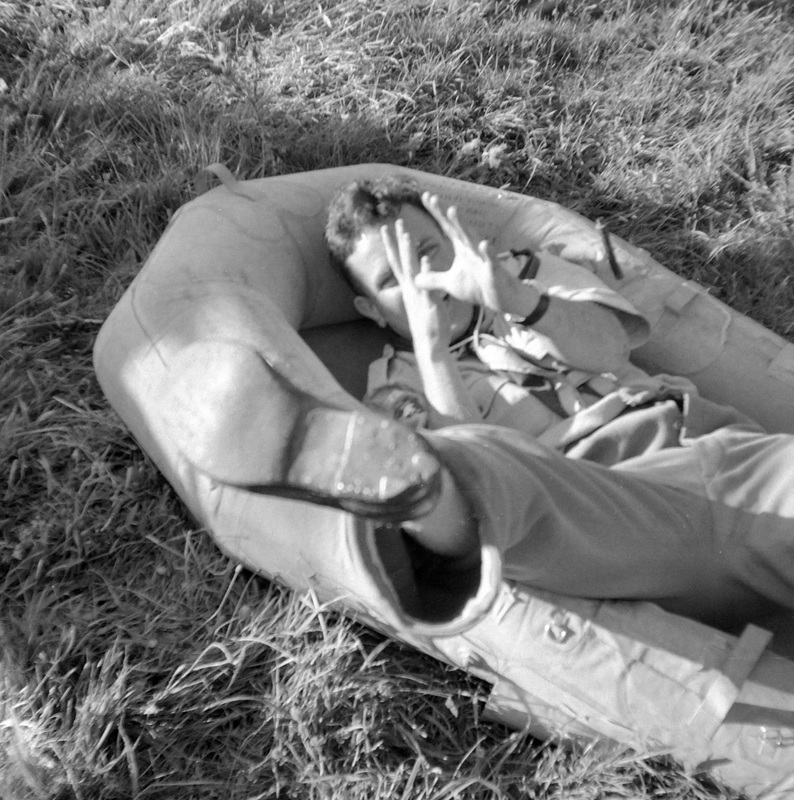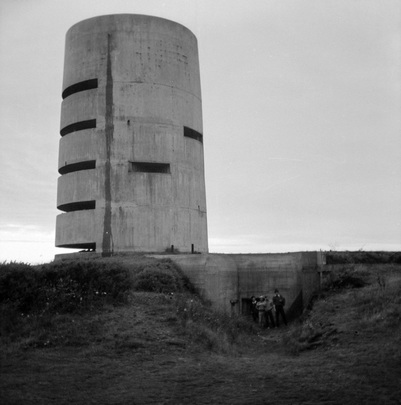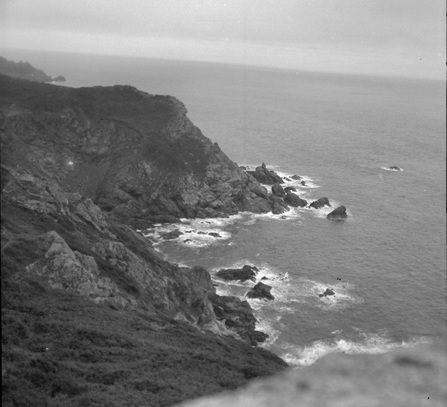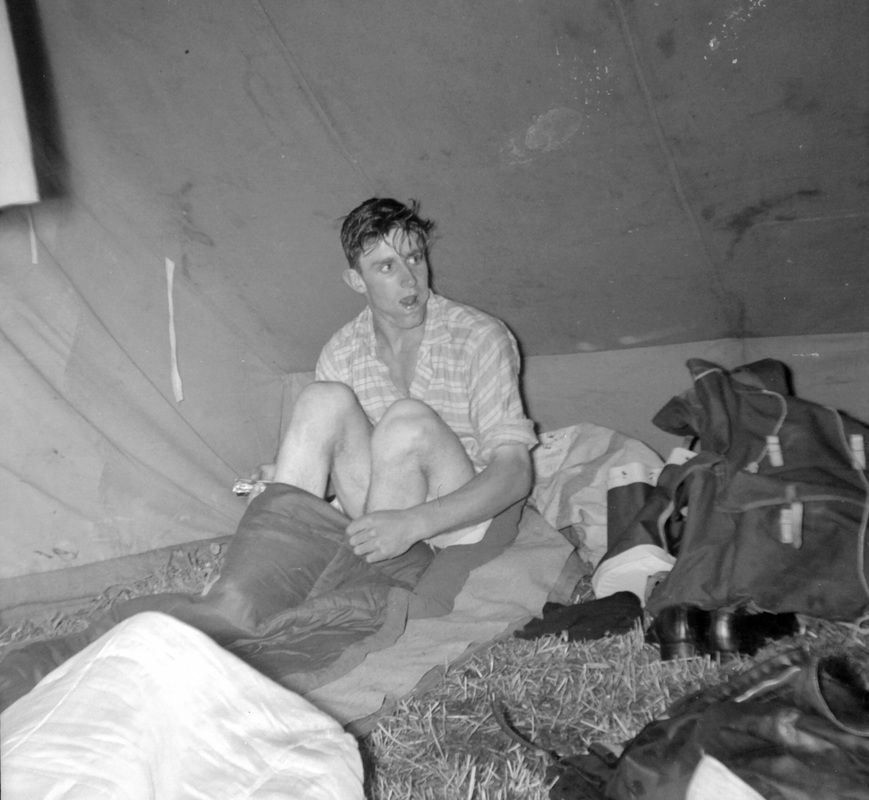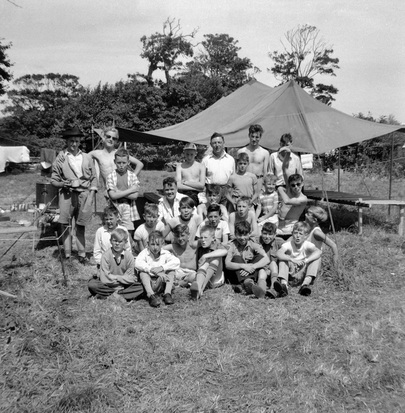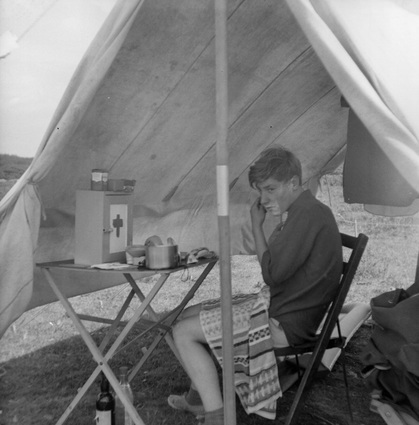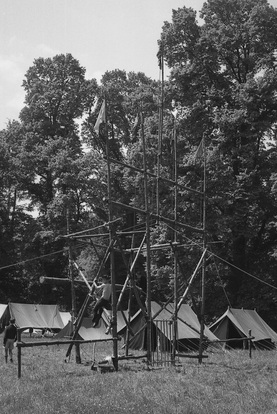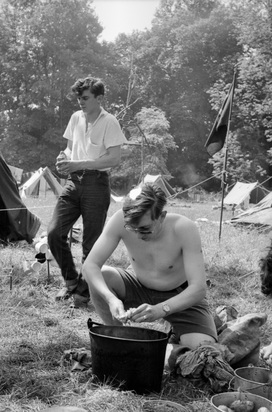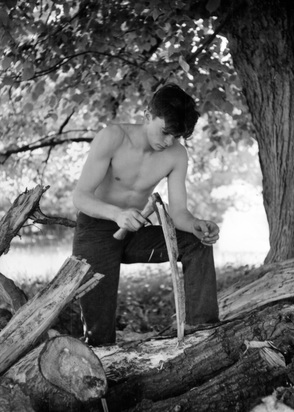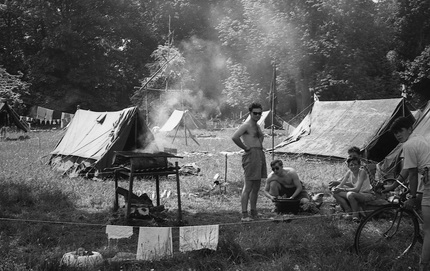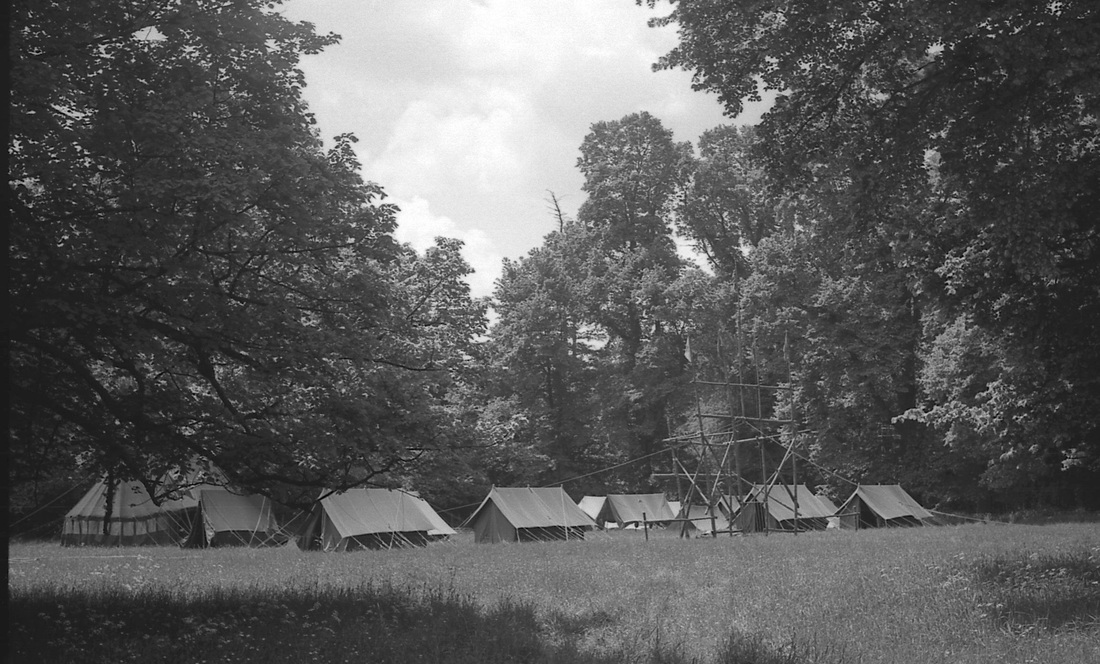|
Doing Their Best:
More Scouting Memoirs Richard Pinker and Philip Martin Photos courtesy Richard Pinker (RP) and Philip Martin (PM) Additional Research by David Ibberson March 2016 This amazing collection of photos and memories brings back life for boys since the 1900s, when the spirit of outward bound and social responsibilities was learnt by practical experience with a minimum of adult supervision. For all scouts the commitment to the Scout Law bonded entrants with previous and future members based on the pledges originally proposed by Lord Robert Baden-Powell as: I Will Do My Duty to God and the King. I Will Do My Best to Help Others Whatever it Costs. I Know the Scout Law and Will Obey it. Right: Cover of Baden-Powell's seminal work on Scouting |
The Scout Promise is a useful way of explaining more about the movement. The word Scouting was an interesting choice by Baden-Powell, based on the principle of finding out more about how to become a worthy adult.
|
I Will Do My Duty to God and the King
The commitment to follow a spiritual instruction and to serve the nation state was felt strongly during the wars which punctuated the 1900s including the Boer War and the First and Second World Wars. Baden-Powell, the hero of the Siege of Mafeking, started the movement in 1908 based partly on military training methods. The Box Troop was formed in 1910 and this unique photo shows self-conscious village schoolboy Norman Martin in about 1912. He had probably just been inducted into the Box Troop, two years before the outbreak of the Great War. From the outset, the Box Scouts were very successful and twelve Box Scouts attended a gathering of 30,000 at Windsor in 1911 to be reviewed by King George V.[1] During both World Wars the Scouting movement became a part of the national non-military, active service to carry messages, man defensive stations and to fund-raise for the war effort. During the Second World War, as members became adult they left the Scouts to enter the services, and the troop ran down. Left: Norman Martin (courtesy PM) |
It was required to be re-formed on a civilian basis in 1948 under scout master Ben Vaughan from Barn Piece. He has been described as a brain-box telephone engineer but totally hare-brained, leading the troop on wild adventures through Hazelbury Woods and down the quarries.
Surprising to us is the amount of responsibility given to young men. It was based on junior members being attached to either the Peewit Patrol or the Hound Patrol and following the guidance of more senior scouts in that patrol.
|
Training courses for Patrol Leaders and Seconds were a vital part of educating these young men as community leaders, such as Norman Martin's young son, Phillip, seen left, outside 5 Bath Road (now High Street) in about 1952.
Above: Members of the troop celebrating the opening of the Scout Hut in 1955 showing L to R: Back row: Bob Hancock, Paul Phillips and Phil Martin; Front: Rodney Brickell, Richard Pinker, Mike Betteridge |
The amount of trust given to youngsters strikes us as unusual, not least the obligatory carrying of knives, an essential part of the Scout kit until the 1960s. Phil Martin, Norman's son, had this sheath knife which the scout master would inspect to ensure it was sharp enough.
This trust encouraged the initiatives needed for the building of the new Scout Hut in 1954, seen below left with Alec Cogswell painting the lean to and below right the lads just before going home time. One of the main tasks allotted to the handful of scouts, who then made up the troop, was chipping mortar off the hundreds of old hollow concrete blocks that came from the old wartime Pioneer Corps camp at the lower Ashley railway siding.
This trust encouraged the initiatives needed for the building of the new Scout Hut in 1954, seen below left with Alec Cogswell painting the lean to and below right the lads just before going home time. One of the main tasks allotted to the handful of scouts, who then made up the troop, was chipping mortar off the hundreds of old hollow concrete blocks that came from the old wartime Pioneer Corps camp at the lower Ashley railway siding.
The launching of a canoe in the very early 1960s reflects the same spirit of independent achievement. The pictures below show the trial of the canoe one evening before its official naming. The canoe was christened Le Bequet after the farm on Guernsey where the troop had summer camps in both 1959 and 1960.
Scout Camps
The idea of comradeship and self-sacrifice permeated the scouting movement from earliest days. The concept of away camps was a vital part of building the team spirit. The scout camps were the inspiration of Skip, Alec Cogswell, who led the ventures and was ably supported by Len Weeks (cub master). The following amazing photos by Richard Pinker show the adventurous spirit generated in these camps during the 1950s and 1960s. Richard has a faint recollection that Percy Chandler used to supply the vehicle for the transport.
West Quantock Head, 1957
The summer camp in 1957 went to West Quantock Head, Somerset. It was supervised by Len Weeks, seen top left and top centre. Skip is seen dishing out food in the photo below right. Most of the time was spent outside enjoying meals and the beach at St Audries before gathering together for a troop photograph.
The idea of comradeship and self-sacrifice permeated the scouting movement from earliest days. The concept of away camps was a vital part of building the team spirit. The scout camps were the inspiration of Skip, Alec Cogswell, who led the ventures and was ably supported by Len Weeks (cub master). The following amazing photos by Richard Pinker show the adventurous spirit generated in these camps during the 1950s and 1960s. Richard has a faint recollection that Percy Chandler used to supply the vehicle for the transport.
West Quantock Head, 1957
The summer camp in 1957 went to West Quantock Head, Somerset. It was supervised by Len Weeks, seen top left and top centre. Skip is seen dishing out food in the photo below right. Most of the time was spent outside enjoying meals and the beach at St Audries before gathering together for a troop photograph.
Branscombe, South Devon, 1958
The following year the weather on the summer camp was warmer and most of the boys spent time enjoying the beach, surfing waves, and larking around (Alec Cogswell on the right) on the south Devon coast.
The following year the weather on the summer camp was warmer and most of the boys spent time enjoying the beach, surfing waves, and larking around (Alec Cogswell on the right) on the south Devon coast.
Channel Islands, 1959
The troop went to the Channel Islands two years running.The first visit was rather traumatic. The scouts and equipment arrived safely at Weymouth for the crossing and the equipment was loaded into large crates. The scouts boarded and then watched crates being loaded into the hold. Only when the ship cast off was it realised that one crate remained, and that one contained the tents. It turned out that the hold was full and the crate would have to follow on the next ship but on the next day!
Fortunately the Guernsey scouts took pity and that night was spent in the loft of an old house with, for bedding, hundreds of mattresses (left over from war?). Richard is pleased to report, We all survived. Needless to say on the crossing the following year more careful attention was paid to equipment.
Le Bequet, Channel Islands, 1960
The camp went to Le Bequet, Channel Islands, again in 1960. The troop were interested to see the local sights including a German gun tower below.
The troop went to the Channel Islands two years running.The first visit was rather traumatic. The scouts and equipment arrived safely at Weymouth for the crossing and the equipment was loaded into large crates. The scouts boarded and then watched crates being loaded into the hold. Only when the ship cast off was it realised that one crate remained, and that one contained the tents. It turned out that the hold was full and the crate would have to follow on the next ship but on the next day!
Fortunately the Guernsey scouts took pity and that night was spent in the loft of an old house with, for bedding, hundreds of mattresses (left over from war?). Richard is pleased to report, We all survived. Needless to say on the crossing the following year more careful attention was paid to equipment.
Le Bequet, Channel Islands, 1960
The camp went to Le Bequet, Channel Islands, again in 1960. The troop were interested to see the local sights including a German gun tower below.
Of course, some of the sights in Le Bequet were more interesting than others. Does anyone claim to know the young person shown below left or can you add names to the whole troop below right?
East Boldre, Lymington, Hampshire, 1961
The final series of summer camp photos are from the visit to the New Forest on 1961.
The final series of summer camp photos are from the visit to the New Forest on 1961.
I Know the Scout Law and Will Obey it
Knowing one's place and following instructions are not concepts that we seek to pass on today. More important virtues are often given as an inquisitive mind and independent inquiry. The difference probably reflects the society in which we live, more than the innate virtues of people. Nonetheless, we can still respect the importance of stability and peace in our society, virtues that Baden Powell would have respected.
District Camp
The shared beliefs of Scouts throughout the UK and nationally is one of the endearing features of the movement. It is reflected in these photos of the District Camp in 1962.
Knowing one's place and following instructions are not concepts that we seek to pass on today. More important virtues are often given as an inquisitive mind and independent inquiry. The difference probably reflects the society in which we live, more than the innate virtues of people. Nonetheless, we can still respect the importance of stability and peace in our society, virtues that Baden Powell would have respected.
District Camp
The shared beliefs of Scouts throughout the UK and nationally is one of the endearing features of the movement. It is reflected in these photos of the District Camp in 1962.
Baden Powell's Retirement 1937
When he retired from leading the movement, aged 80 in 1937, Baden-Powell explained his philosophy on life and the reasons he had written his book Scouting for Boys which remains the fourth best-selling book of the 1900s:
I believe that God put us in this jolly world to be happy and enjoy life. One step towards happiness is to make yourself healthy and strong while you are a boy. But the real way to get happiness is by giving out happiness to other people. Try and leave this world a little better than you found it.
Many aspects of Baden Powell's personality have been questioned in our modern world but few would dispute his aims of positivism and social conscience.
When he retired from leading the movement, aged 80 in 1937, Baden-Powell explained his philosophy on life and the reasons he had written his book Scouting for Boys which remains the fourth best-selling book of the 1900s:
I believe that God put us in this jolly world to be happy and enjoy life. One step towards happiness is to make yourself healthy and strong while you are a boy. But the real way to get happiness is by giving out happiness to other people. Try and leave this world a little better than you found it.
Many aspects of Baden Powell's personality have been questioned in our modern world but few would dispute his aims of positivism and social conscience.
Changes in Modern Times
The photos cover the period of modernisation when the Baden Powell's uniform of hat and shorts disappeared, to be replaced by long trousers and the beret. The knife also was no longer seen as part of the scout attire. Interestingly, in protest, some Scout Groups broke away and formed Baden Powell Troops. Devizes had one. The Scout Law and Promise also changed in order to accommodate the multi-cultural society emerging in the 1960s.
In principle, the underlying objectives of Baden Powell remained unchanged. What we can say, is that the contents of scouting for boys is as relevant today as it was a 100 years ago, except it is now Scouting for Boys and Girls.
The photos cover the period of modernisation when the Baden Powell's uniform of hat and shorts disappeared, to be replaced by long trousers and the beret. The knife also was no longer seen as part of the scout attire. Interestingly, in protest, some Scout Groups broke away and formed Baden Powell Troops. Devizes had one. The Scout Law and Promise also changed in order to accommodate the multi-cultural society emerging in the 1960s.
In principle, the underlying objectives of Baden Powell remained unchanged. What we can say, is that the contents of scouting for boys is as relevant today as it was a 100 years ago, except it is now Scouting for Boys and Girls.
References
[1] Additional details throughout this article have been provided courtesy David Ibberson, Lambert's Way: Scouting in Box, 1985, which you can read on-line at http://nestonandboxscouts.org.uk/wp-content/uploads/Lamberts-Way.pdf
[1] Additional details throughout this article have been provided courtesy David Ibberson, Lambert's Way: Scouting in Box, 1985, which you can read on-line at http://nestonandboxscouts.org.uk/wp-content/uploads/Lamberts-Way.pdf
